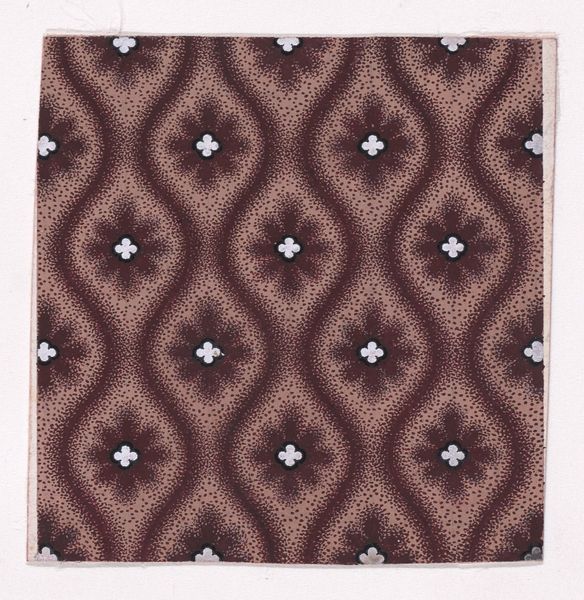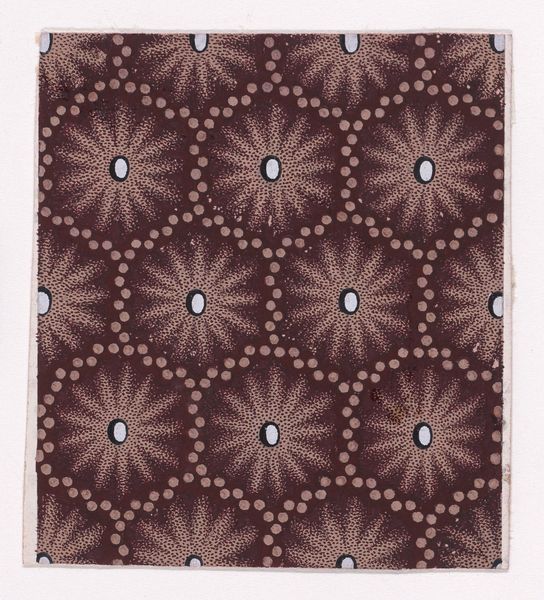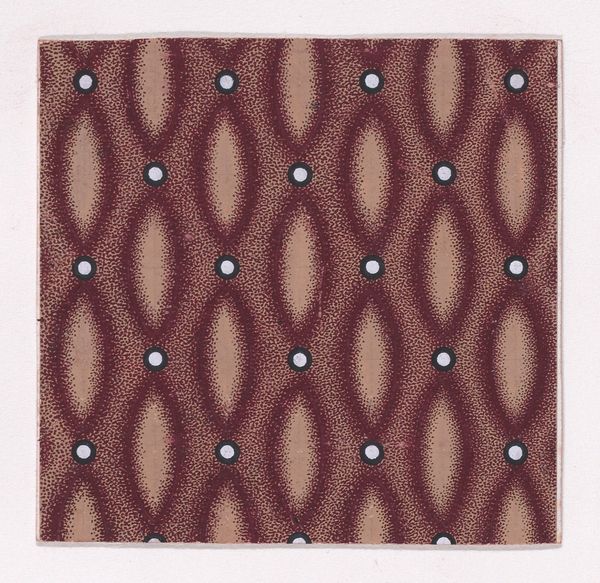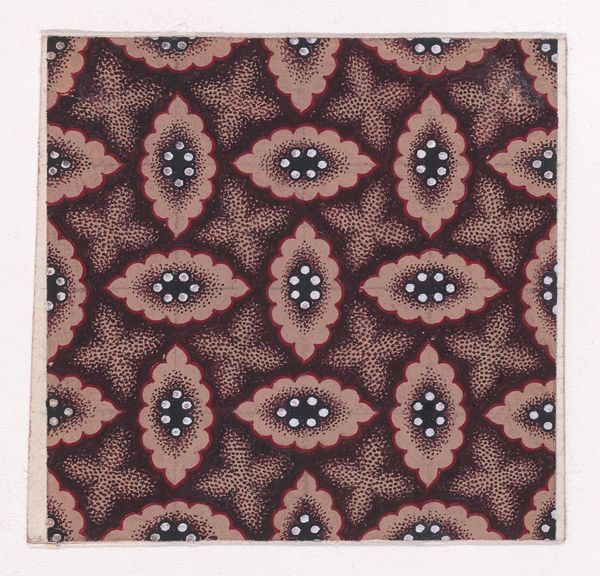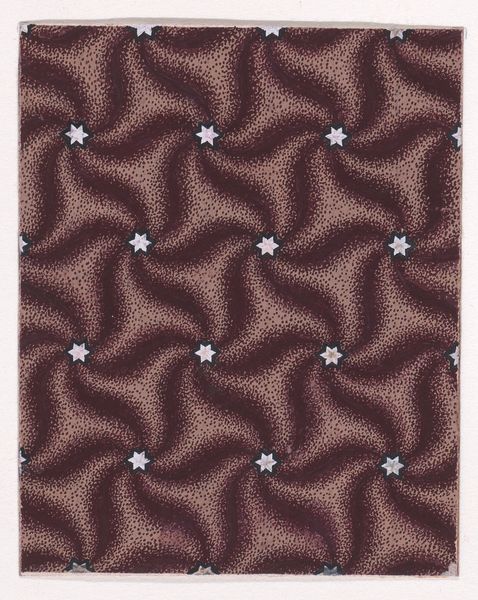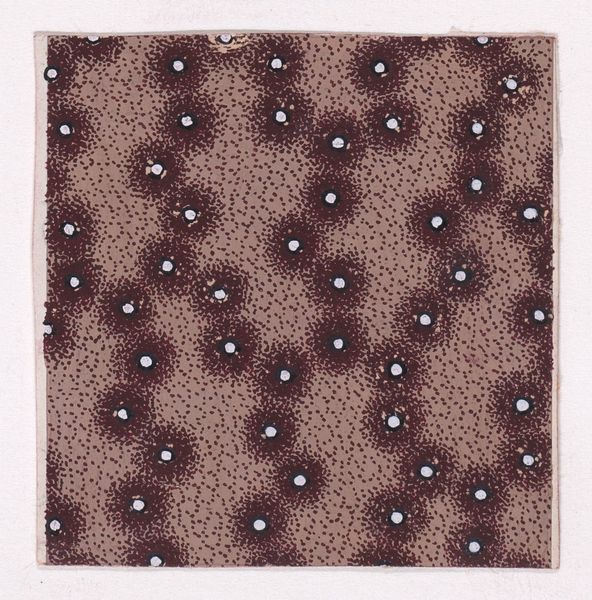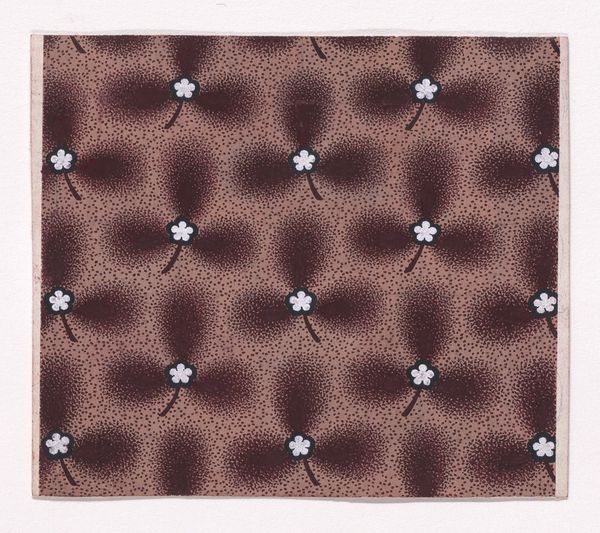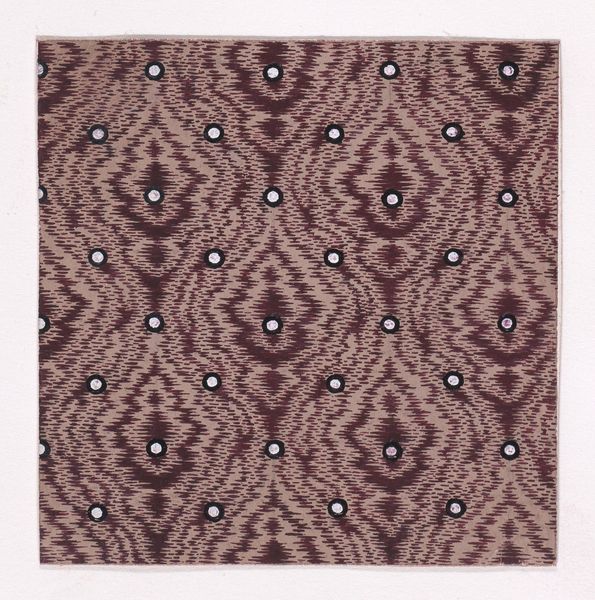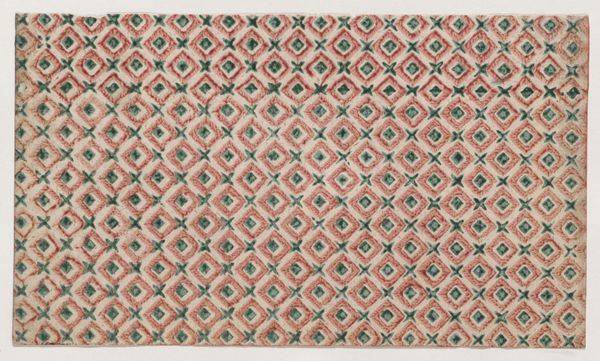
Textile Design with a Tiled Background of Alternating Rectangular Shapes Framed by Ribbons Decorated with Trefoils of Pearls 1840
0:00
0:00
drawing
#
drawing
#
pattern design
#
abstract pattern
#
geometric
Dimensions: Sheet: 2 9/16 × 2 7/8 in. (6.5 × 7.3 cm)
Copyright: Public Domain
Editor: Here we have an intriguing textile design, crafted around 1840 by an anonymous artist. The piece uses drawings and print to create this geometric composition of alternating rectangular shapes. There's something almost hypnotic about it, but also oddly comforting. What strikes you most when you look at it? Curator: Well, it's a visual dance, isn't it? I see echoes of Byzantine mosaics whispering through those rectangular tiles. It reminds me of wandering through ancient churches, gazing up at the way light fractured through colored glass. It’s a quiet but assured sort of elegance. Do you feel the same tranquility in the repeated patterns, or something else perhaps? Editor: I do get that sense of serenity, but there's also something a bit rigid in the precise repetition, especially with those groups of three small white dots. Curator: Indeed. Think about what was happening in 1840 – industrialization was blossoming, machinery was on the rise. Could this geometric, regimented design be a reflection of that societal shift? A hidden nod to the changing times, masked as mere decoration? The mind reels! Editor: That's a fascinating angle. It definitely gives the piece a deeper layer of meaning to consider. It's made me see how design, even seemingly simple patterns, can echo the larger cultural conversations of their time. Curator: Exactly. It all becomes a bit like a visual time capsule, doesn't it? Each viewing reveals another story waiting to be unpacked, even in patterns. What a delight!
Comments
No comments
Be the first to comment and join the conversation on the ultimate creative platform.
